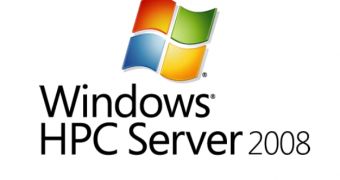As far as Microsoft is concerned, Windows and Linux dual boot scenarios go beyond the desktop, well beyond. The Redmond company's proprietary operating system and the open source platform can also dual boot on supercomputers. Essentially, what Microsoft is proposing involves pushing Windows into what is generally regarded as the natural territory for open source, namely high performance computing. In this regard, the software giant published "A Hybrid OS Cluster Solution" whitepaper in June, designed to present Dual-Boot and Virtualization scenarios involving Windows HPC Server 2008 and Linux Bull Advanced Server for Xeon.
The documentation, authored by Dr. Patrice Calegari, HPC Application Specialist, BULL S.A.S., and Thomas Varlet, HPC Technology Solution Professional, Microsoft, is designed to act as nothing more than a proof of concept. Microsoft has already applauded the integration of Windows HPC Server 2008 with one of the systems in the top 25 supercomputers of the world and is ready to grab more of the high performance computing market as it readies the next iteration of its Windows HPC operating system.
"The choice of the right operating system (OS) for a high performance computing (HPC) cluster can be a very difficult decision for IT departments. And this choice will usually have a big impact on the Total Cost of Ownership (TCO) of the cluster. Parameters like multiple user needs, application environment requirements and security policies are adding to the complex human factors included in training, maintenance and support planning, all leading to associated risks on the final return on investment (ROI) of the whole HPC infrastructure. The goal of this paper is to show that simple techniques are available today to make that choice unnecessary, and keep your HPC infrastructure versatile and flexible", Microsoft revealed in the introduction of the whitepaper.
According to the Redmond company, running several operating systems on the same HPC cluster can be done in two ways. First off a single platform can be selected while the cluster is booting, from a dual boot configuration. In addition, several operating systems can run simultaneously on the same cluster. This involves what Microsoft referred to as a Hybrid Operating System Cluster - where the HPC platforms are sharing computing nodes running concomitantly. The Hybrid OS Cluster Solution whitepaper deals with both types mentioned above.

 14 DAY TRIAL //
14 DAY TRIAL //